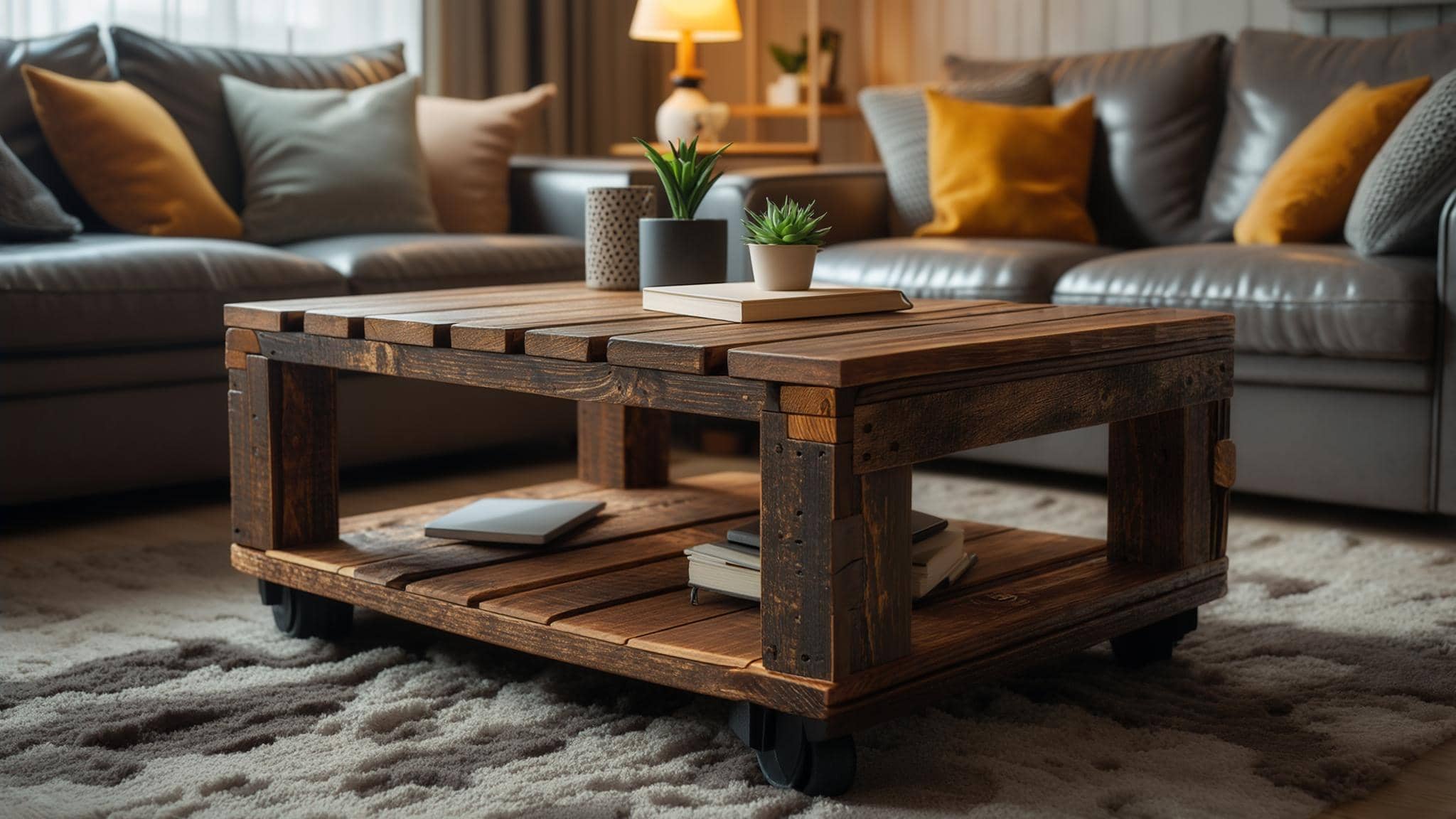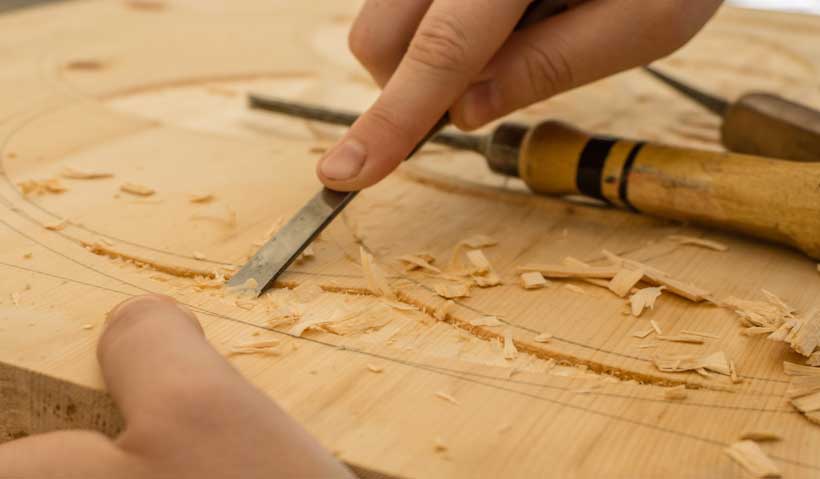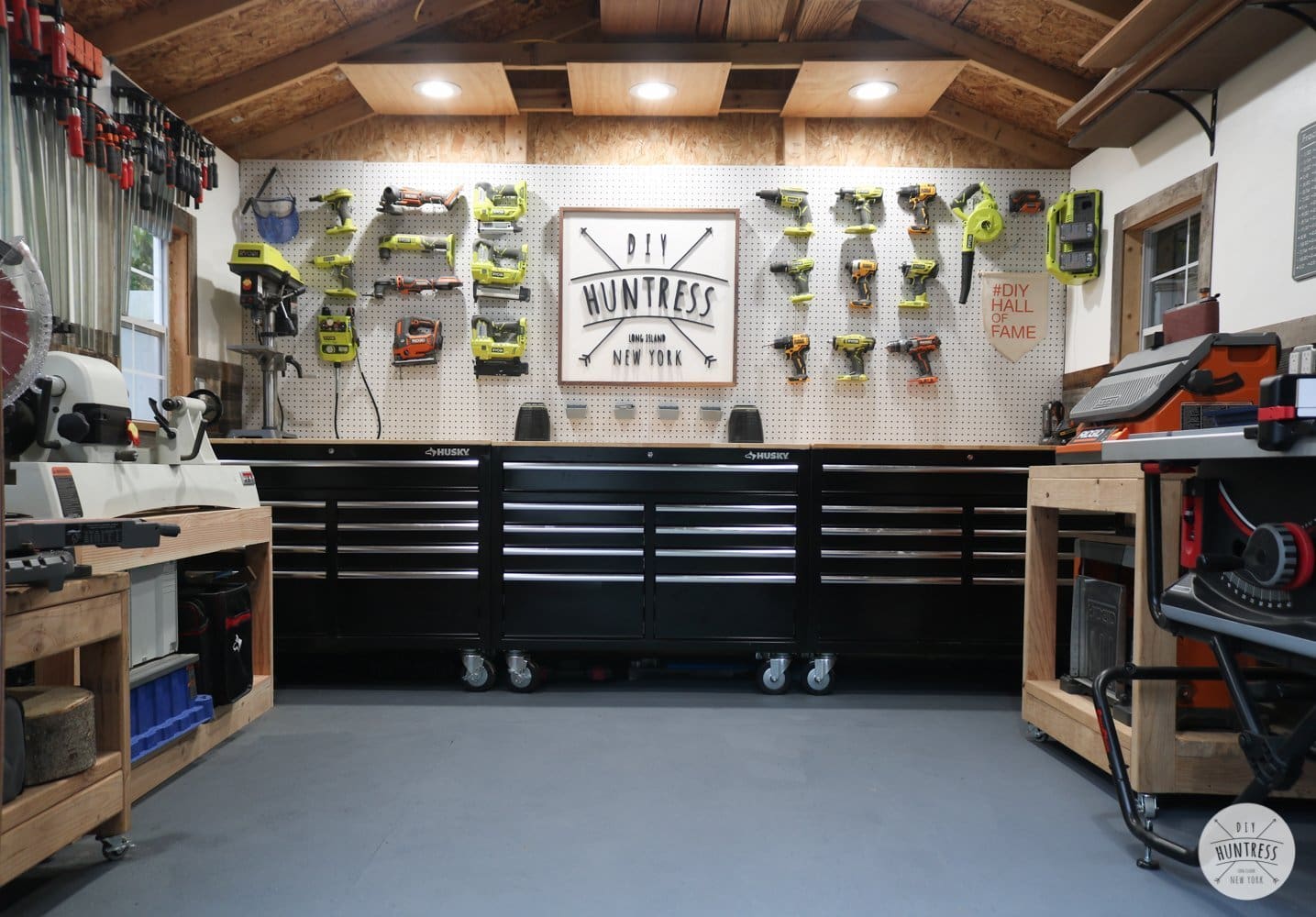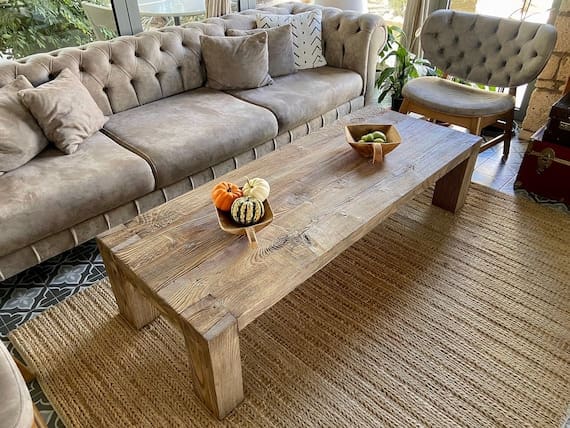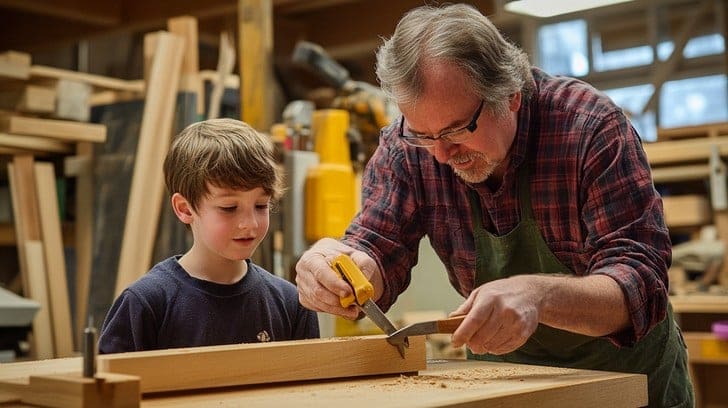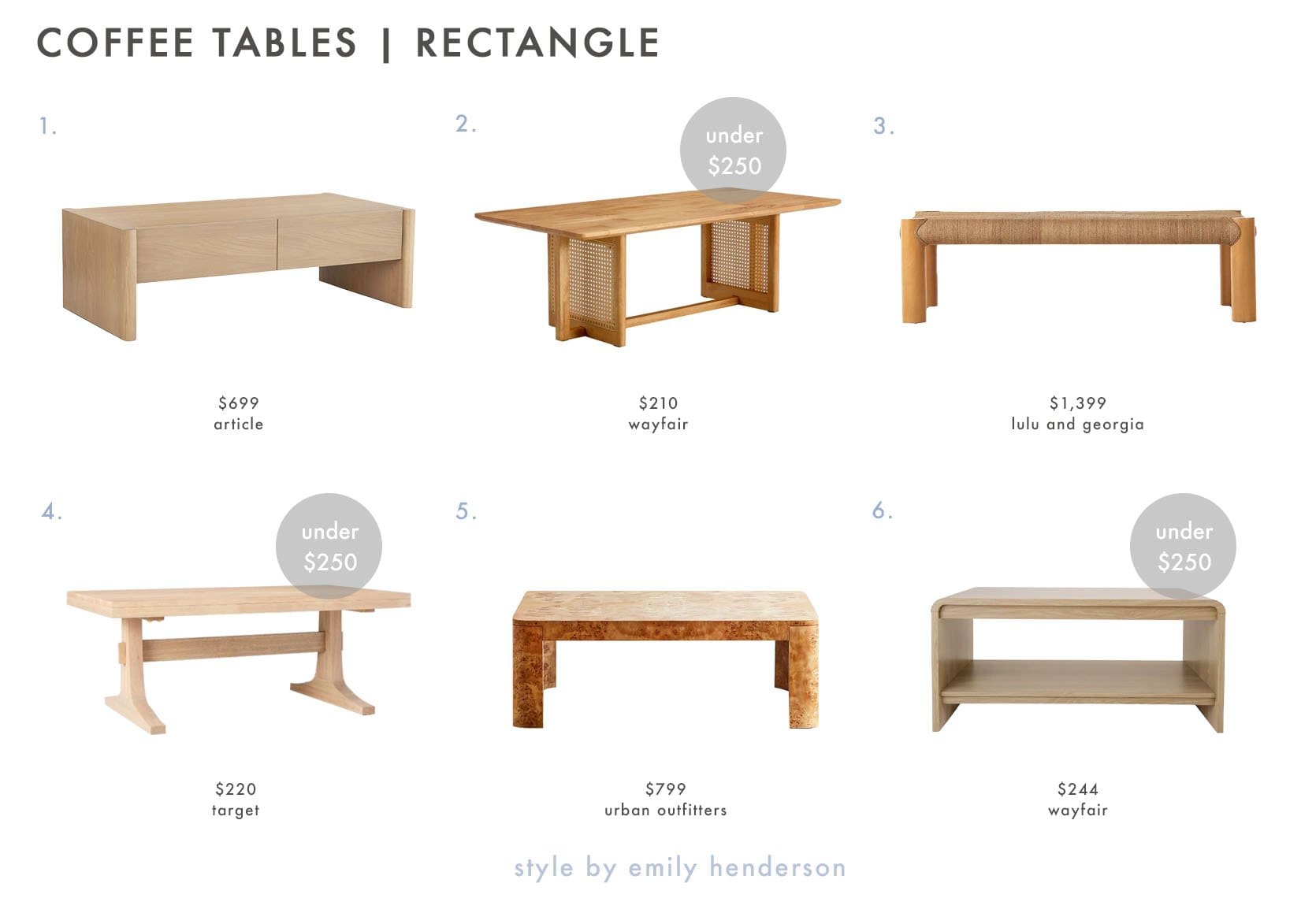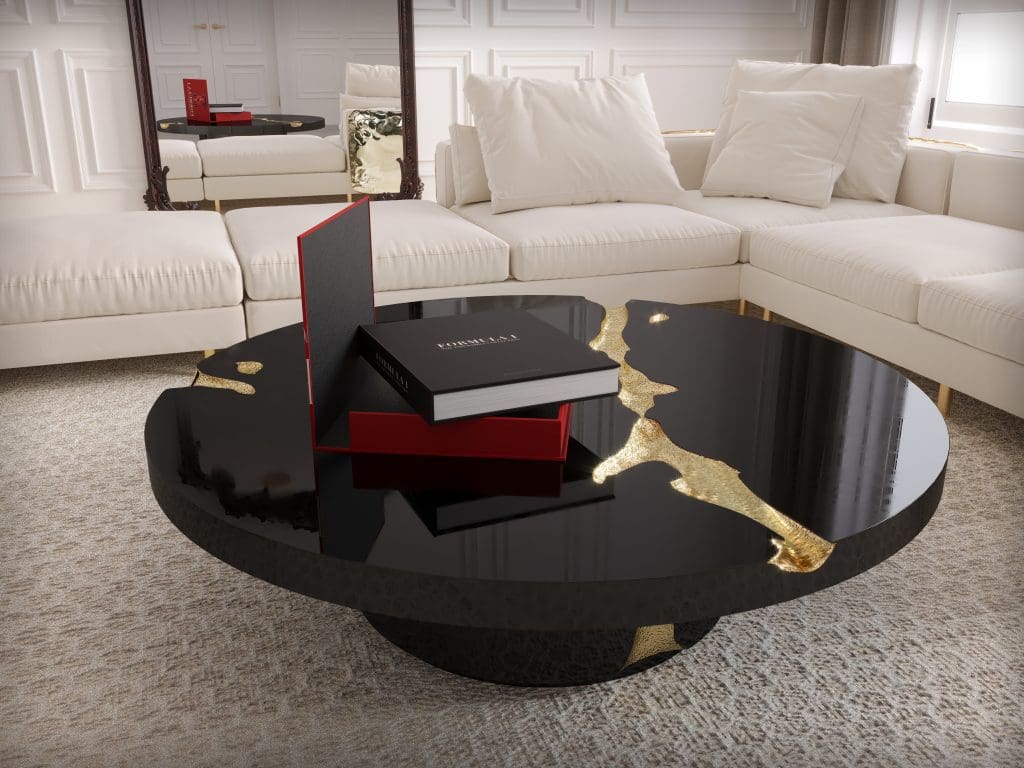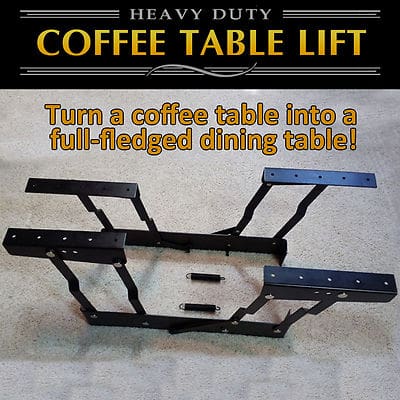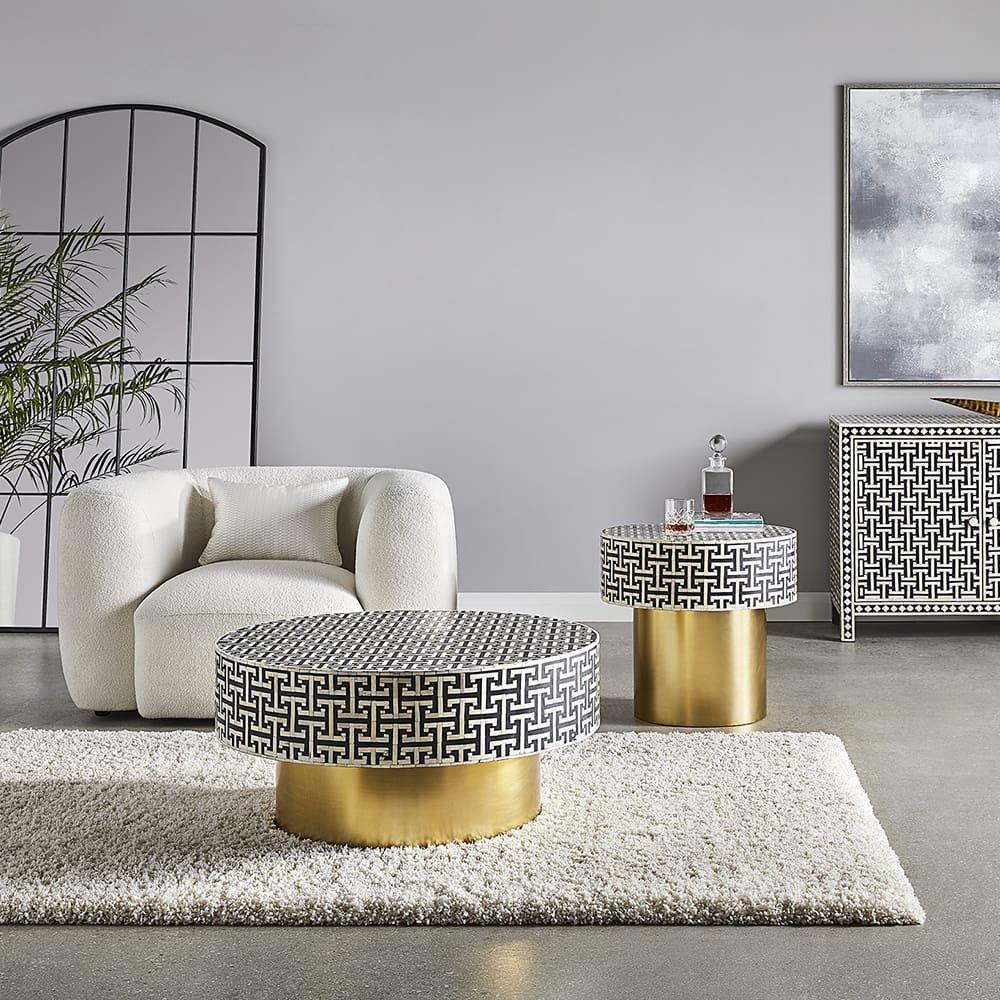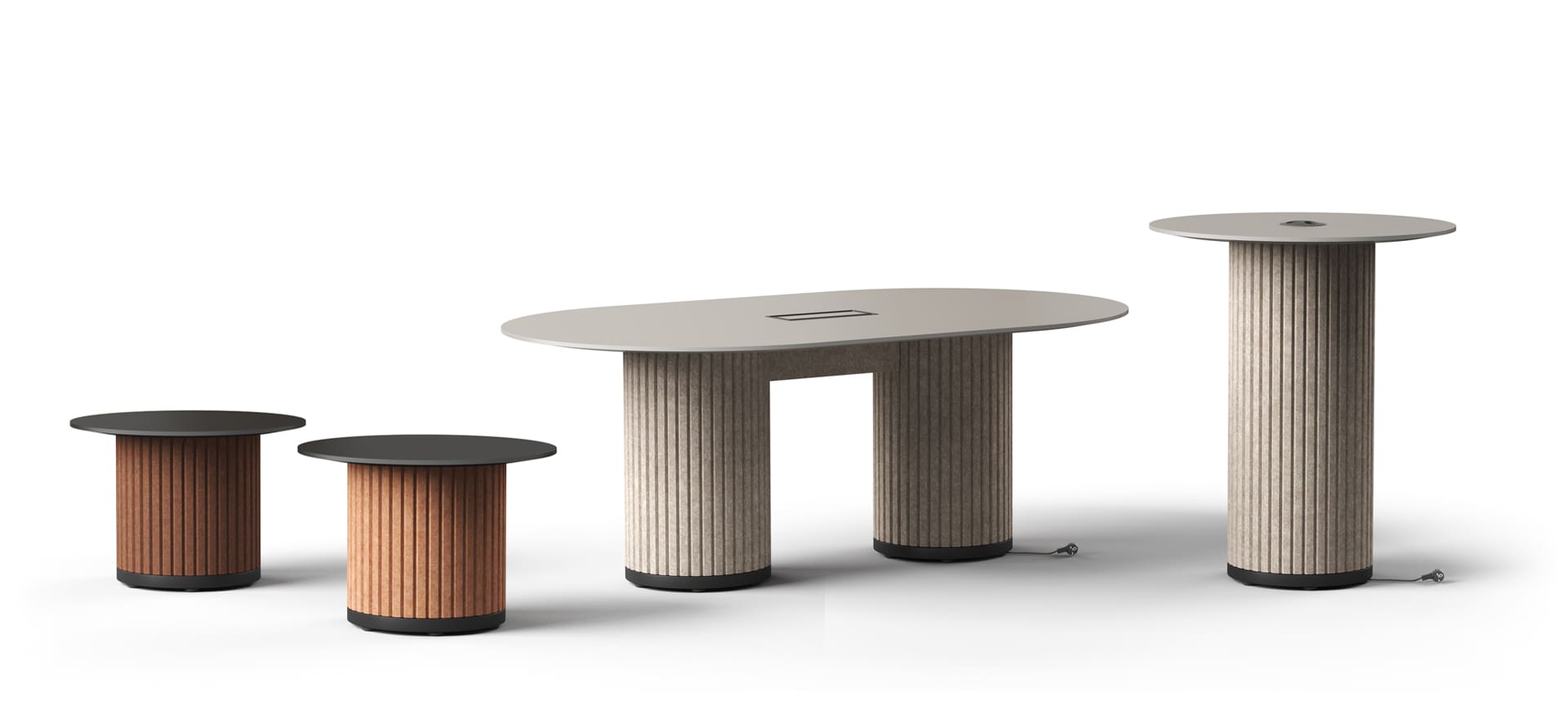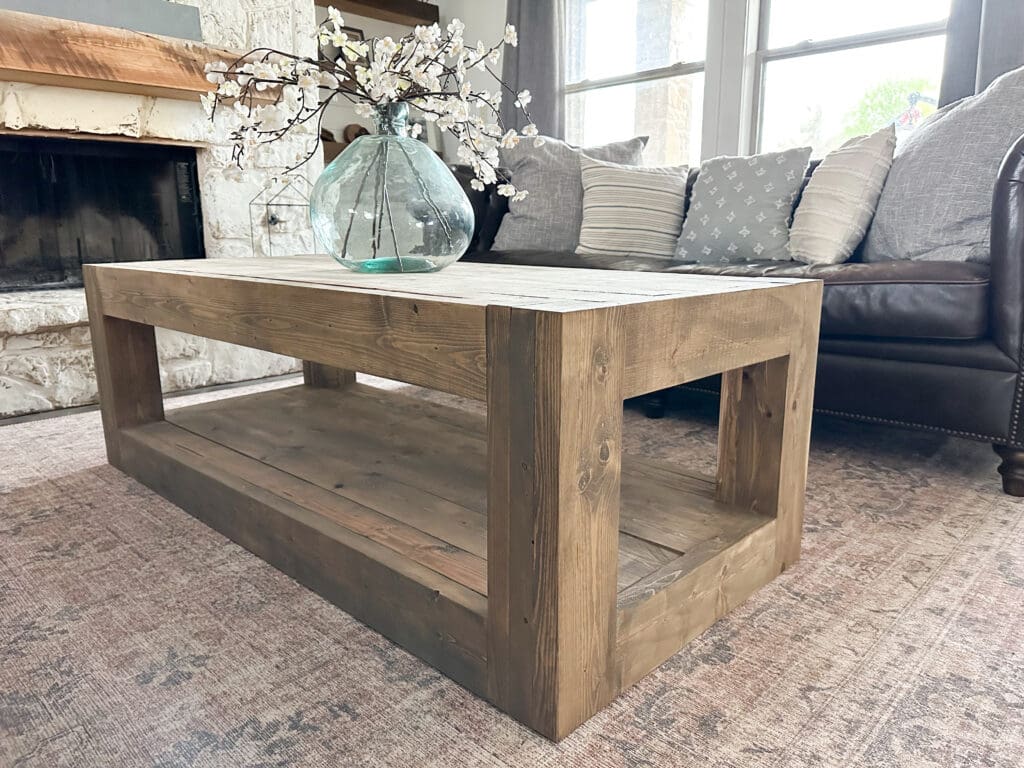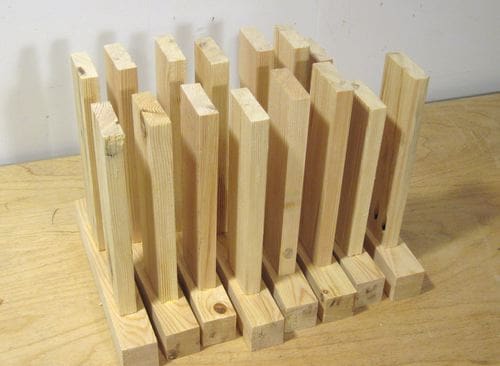DIY Coffee Table Psychology: The Hidden Mental Health Benefits and Environmental Secrets Behind Your Next Build
Building a DIY coffee table has become more accessible than ever, with simple modern designs achievable for around $30 in materials according to popular DIY tutorials. Yet behind this seemingly straightforward furniture project lies a complex web of psychological benefits, environmental considerations, and design innovations that most makers never fully explore.
Table of Contents
-
The Emotional Architecture of DIY Coffee Tables
-
The Hidden Environmental Lifecycle of DIY Coffee Tables
-
The Underground Economy of Coffee Table Plans and Knowledge
-
The Future-Proofing Philosophy of Modular Coffee Table Design
-
The Biomimicry Revolution in Coffee Table Engineering
-
The Sensory Design Revolution Beyond Visual Aesthetics
TL;DR
-
Building a DIY coffee table activates the same neural pathways as meditation, providing measurable stress relief and cognitive benefits that extend far beyond the finished product
-
The complete environmental story of your furniture spans from material sourcing to end-of-life disposal, with surprising sustainability winners and losers most makers never consider
-
Coffee table plans are psychologically engineered to balance achievability with complexity, often hiding potential failure points and creating tool dependency
-
Modular design principles allow coffee tables to evolve rather than become obsolete, representing a shift from disposable to generational thinking
-
Nature’s structural solutions offer revolutionary approaches to coffee table design that maximize strength while minimizing material use
-
Strategic sensory design beyond visual aesthetics creates furniture that invites touch and provides satisfaction through temperature, texture, and acoustic properties
The Emotional Architecture of DIY Coffee Tables
Building a DIY coffee table becomes a profound psychological journey that intertwines with identity formation, emotional processing, and the human need for tangible accomplishment. This process activates therapeutic benefits through hands-on creation while serving as a vehicle for self-discovery and relationship building.
Woodworking and furniture creation activate the same neural pathways as meditation, providing measurable stress relief through what psychologists call “productive meditation.” I’ve watched countless makers discover this phenomenon firsthand – the moment when their racing thoughts quiet down as they focus on measuring, cutting, and joining wood pieces together.
Every design choice becomes a declaration of personal values and aesthetic preferences, making the building process an exercise in self-discovery and identity crafting. When you choose reclaimed barn wood over pristine pine boards, you’re expressing something deeper about your relationship with history and sustainability. These decisions reveal aspects of your personality that you might not have recognized before picking up that first piece of lumber.
Collaborative coffee table projects strengthen relationships by creating shared accomplishment memories that outlast the furniture itself. I’ve seen couples work through communication challenges while building together, and parents pass down skills to children in ways that create lasting bonds beyond the finished piece.
The Therapeutic Workshop: Mental Health Through Making
Research shows that woodworking and furniture creation provide measurable stress relief and cognitive benefits. The repetitive nature of building tasks creates flow states that help process daily stressors while engaging in purposeful creation.
The repetitive motions of sanding, measuring, and joining wood create flow states where your mind processes stress while your hands engage in purposeful work. This isn’t just feel-good psychology – studies demonstrate actual cortisol reduction and improved mental clarity during these activities. Your brain enters a meditative state while your hands stay busy with meaningful tasks.
Breaking projects into micro-achievements creates sustainable motivation loops that combat project abandonment through dopamine release cycles. Each completed cut, each perfectly sanded surface, each successful joint triggers a small neurochemical reward that keeps you engaged throughout longer builds. Smart makers structure their DIY coffee table projects around these natural reward cycles.
Japanese wabi-sabi principles applied to DIY furniture help you see mistakes as character-building elements, fundamentally shifting perfectionist mindsets. When you accidentally cut a leg slightly short or create an uneven joint, these philosophies teach you to embrace these “imperfections” as unique features that mass-produced furniture could never replicate.
Flow State Engineering in Small Spaces
The repetitive nature of sanding, measuring, and joining wood creates productive meditation where your mind processes daily stressors while your hands engage in purposeful creation. This state provides therapeutic benefits regardless of workshop size.
Repetitive woodworking motions trigger the same neurological responses as traditional meditation practices, reducing cortisol levels and promoting mental clarity. Your nervous system responds to the rhythmic nature of hand-planing or consistent sanding strokes in ways that calm anxiety and improve focus.
Small workshop spaces actually enhance focus by limiting distractions and creating intimate environments where flow states develop more easily. I’ve found that makers working in cramped garages or basement corners often achieve deeper concentration than those with expansive workshops filled with potential distractions.
For makers working with limited space, understanding how to clean your backyard and organize your outdoor workshop area can maximize your coffee table building potential while maintaining a therapeutic environment.
Failure as Feature: Embracing Imperfection Psychology
Japanese wabi-sabi principles applied to DIY furniture teach makers to see mistakes as character-building elements. This approach fundamentally shifts perfectionist mindsets that plague modern life and creates healthier relationships with imperfection.
Viewing wood grain irregularities, slight measurement errors, and finish imperfections as unique character features reduces anxiety around achieving impossible perfection standards. These natural variations become the signature elements that distinguish your handmade coffee table DIY project from sterile factory productions.
Embracing imperfection in furniture making translates to improved mental resilience in other life areas, creating healthier coping mechanisms for everyday challenges. When you learn to appreciate a slightly uneven table leg as “rustic charm” rather than failure, you develop psychological tools that help you handle imperfections throughout your life.
A maker I know accidentally cut their coffee table legs 1/4 inch too short and discovered that adding small wooden shims created an attractive design accent that friends consistently complimented, transforming a “mistake” into the table’s most distinctive feature.
The Completion Dopamine Cycle
Understanding how to break coffee table projects into micro-achievements creates sustainable motivation loops that combat project abandonment. Each completed step triggers dopamine release, maintaining engagement throughout longer builds.
Structuring projects into distinct phases provides regular accomplishment milestones that trigger neurochemical reward responses. Your brain releases dopamine when you complete the cutting phase, again when you finish sanding, and once more when you apply the final coat of finish.
Documenting progress through photos or journals amplifies dopamine release by creating visual evidence of advancement and skill development. I recommend taking photos at each major milestone – you’ll be amazed how motivating it becomes to see your progress documented over time.
Identity Crafting Through Object Creation
Every design choice in a DIY coffee table becomes a declaration of personal values, aesthetic preferences, and life philosophy. Material selection, style evolution, and design decisions reveal deeper aspects of identity and personal growth patterns.
Material choices reflect deeper values about sustainability, authenticity, and environmental relationships – whether choosing reclaimed barn wood, industrial steel, or sustainable bamboo. These selections become expressions of your worldview that extend far beyond simple aesthetic preferences.
Documenting how coffee table designs change over years reveals personal growth patterns and shifting life priorities in ways traditional journaling cannot capture. Your furniture choices create a physical timeline of your evolving tastes, values, and life circumstances.
Material Choices as Personal Manifestos
Whether choosing reclaimed barn wood, industrial steel, or sustainable bamboo, each material selection reflects deeper values about sustainability, authenticity, and relationship with the environment. These choices become expressions of personal philosophy.
Selecting reclaimed materials demonstrates environmental consciousness and appreciation for history, while choosing new sustainable options shows forward-thinking responsibility. Your material decisions communicate your values to everyone who sees and uses your finished piece.
Industrial materials reflect modern aesthetic preferences and urban lifestyle values, contrasting with traditional wood choices that emphasize natural connection. Steel and concrete selections often indicate comfort with contemporary design and urban living environments.
Style Evolution Tracking Through Projects
Documenting how coffee table designs change over years reveals personal growth patterns and shifting life priorities in ways traditional journaling cannot capture. Each project becomes a snapshot of your evolving aesthetic and functional needs.
Early projects often prioritize basic functionality and cost savings, while later builds incorporate more sophisticated joinery and aesthetic considerations as skills develop. This progression mirrors personal growth in confidence, resources, and technical abilities.
Style shifts from minimalist to ornate often correlate with major life transitions, relationship changes, or evolving living situations. Your furniture choices reflect internal changes that you might not consciously recognize until you review your building history.
|
Life Stage |
Coffee Table Priorities |
Material Preferences |
Design Complexity |
|---|---|---|---|
|
Young Adult |
Cost-effective, portable |
Pine, plywood, budget hardware |
Simple rectangular forms |
|
Family Formation |
Child-safe, durable |
Rounded edges, non-toxic finishes |
Functional storage integration |
|
Established Career |
Statement pieces, quality |
Hardwoods, premium hardware |
Complex joinery, custom details |
|
Empty Nest |
Refined aesthetics, legacy |
Exotic woods, heirloom quality |
Artistic expression, showcase pieces |
Social Bonding Through Shared Creation
Coffee table projects become relationship strengtheners when approached collaboratively, creating shared accomplishment memories that outlast the furniture itself. Multi-generational skill transfer preserves family craftsmanship traditions while adapting techniques for modern living.
Collaborative building creates unique bonding experiences through shared problem-solving, skill teaching, and accomplishment celebration that strengthen relationships. Working together on a coffee table DIY project forces communication, patience, and mutual support in ways that typical social activities cannot match.
Multi-generational projects preserve family craftsmanship traditions while adapting historical techniques for modern living spaces and contemporary lifestyles. Grandparents share traditional joinery wisdom while younger builders contribute modern tool knowledge and design sensibilities.
Multi-Generational Skill Transfer
Coffee table projects become vehicles for preserving family craftsmanship traditions while adapting techniques for modern living spaces and lifestyles. These builds create opportunities for knowledge transfer between generations.
Older family members share traditional joinery techniques and wood selection wisdom while younger builders contribute modern tool knowledge and contemporary design sensibilities. This exchange creates learning opportunities that benefit everyone involved while preserving valuable skills.
These collaborative projects create lasting memories and preserve practical skills that might otherwise be lost in increasingly digital family interactions. The physical nature of woodworking forces face-to-face interaction and hands-on teaching that screens cannot replicate.
The Hidden Environmental Lifecycle of DIY Coffee Tables
Most DIY enthusiasts focus only on the building phase while remaining blind to the complete environmental story of their furniture. Understanding the full lifecycle from material sourcing to end-of-life disposal reveals surprising sustainability winners and losers, offering opportunities for true environmental impact.
Complete environmental footprint tracking requires following materials from forest or factory through decades of use to eventual disposal or recycling. This comprehensive view often reveals counterintuitive truths about which choices actually benefit the environment.
The environmental impact of screws, brackets, and hinges often exceeds the wood itself due to mining, smelting, and international shipping chains. These small components carry massive hidden environmental costs that most makers never consider when planning their DIY coffee table projects.
Cradle-to-Grave Material Intelligence
Understanding the complete environmental footprint requires tracking materials from forest or factory through decades of use to eventual disposal or recycling. This comprehensive view reveals surprising sustainability winners and losers in material choices.
VOC emissions from stains and sealers continue for months after application, affecting indoor air quality in ways that compromise the health benefits of natural wood furniture. Your “natural” coffee table might be releasing toxic compounds into your living space for nearly a year after completion.
Designing coffee tables for eventual disassembly and material recovery requires upfront planning that most DIYers never consider but dramatically improves end-of-life sustainability. Planning for future disassembly during the design phase enables true circular economy principles in furniture making.
Hardware carbon footprinting often reveals that metal components have higher environmental costs than the wood itself due to complex manufacturing and shipping processes. Those innocent-looking screws and brackets might carry environmental impacts that dwarf your carefully selected sustainable lumber.
The Reclaimed Wood Myth-Busting
Not all reclaimed wood is environmentally superior to new lumber. Some reclaimed materials require energy-intensive processing that exceeds the carbon footprint of responsibly sourced new wood, challenging common sustainability assumptions.
Heavily weathered reclaimed wood often requires chemical stripping, extensive sanding, and stabilization treatments that consume significant energy and introduce toxic chemicals. The processing required to make some reclaimed materials usable can exceed the environmental cost of harvesting new sustainable lumber.
Transportation costs for specialty reclaimed materials can outweigh environmental benefits, especially when sourced from distant locations rather than local sources. Shipping reclaimed barn wood across the country might generate more emissions than using locally harvested new lumber.
Hardware Carbon Footprinting
The environmental impact of screws, brackets, and hinges often exceeds the wood itself due to mining, smelting, and international shipping chains. Understanding hardware lifecycle costs reveals hidden environmental impacts in furniture construction.
Steel hardware production involves energy-intensive mining, smelting, and manufacturing processes that generate significant carbon emissions before reaching your workshop. The environmental cost of producing a single steel bracket might exceed that of several board feet of sustainably harvested lumber.
International shipping of specialized hardware components adds substantial transportation emissions that can exceed the environmental cost of locally sourced wood materials. Those specialty hinges shipped from overseas carry environmental baggage that local hardware alternatives might avoid.
Finish Chemistry Deep-Dive
VOC emissions from stains and sealers continue for months after application, affecting indoor air quality in ways that compromise the health benefits of natural wood furniture. Understanding finish chemistry helps make healthier choices.
Traditional polyurethane and lacquer finishes release volatile organic compounds for 6-12 months after application, potentially causing headaches, respiratory irritation, and long-term health effects. Your beautiful coffee table DIY project might be slowly poisoning your indoor air quality.
Natural oil finishes provide safer alternatives but require more frequent maintenance and may not provide equivalent durability for high-use surfaces. The trade-off between health and durability requires careful consideration based on your specific use patterns and maintenance willingness.
A DIY maker discovered that their “eco-friendly” coffee table was actually releasing formaldehyde from the plywood core for over eight months after completion, leading them to invest in an air purifier and switch to solid wood for future projects.
End-of-Life Planning During Design
Designing coffee tables for eventual disassembly and material recovery requires upfront planning that most DIYers never consider. This approach enables true circular economy principles in furniture making.
Using mechanical fasteners instead of glue allows future disassembly for repair, modification, or material recovery when the piece reaches end-of-life. This planning decision made during construction dramatically improves the environmental profile of your finished piece.
Selecting compatible materials that can be recycled together simplifies future processing and increases likelihood of successful material recovery. Mixing wood species or combining incompatible metals creates recycling challenges that reduce end-of-life value.
Local Ecosystem Integration Strategies
The most sustainable DIY coffee tables work within local material ecosystems, supporting regional economies while minimizing transportation impacts. Strategic sourcing approaches include bioregional material mapping and urban wood rescue operations.
Identifying wood species, hardware suppliers, and finishing materials within a 100-mile radius creates supply chains that strengthen local economies while reducing environmental impact. This bioregional approach builds community resilience while minimizing transportation emissions.
Transforming storm-damaged urban trees, construction waste, and demolished building materials into coffee table components requires specialized knowledge of wood stability and safety testing. Urban wood rescue operations divert valuable materials from waste streams while creating unique building materials.
Bioregional Material Mapping
Identifying wood species, hardware suppliers, and finishing materials within a 100-mile radius creates supply chains that strengthen local economies while reducing environmental impact. This approach builds regional resilience and sustainability.
Local sawmills often provide fresher lumber with lower moisture content and reduced transportation emissions compared to big-box store materials shipped from distant locations. Fresh-cut local lumber often works better and costs less than shipped alternatives.
Regional wood species offer unique grain patterns and working characteristics that create distinctive furniture while supporting local forest management practices. Working with local species connects your coffee table DIY project to your specific geographic region.
Urban Wood Rescue Operations
Transforming storm-damaged urban trees, construction waste, and demolished building materials into coffee table components requires specialized knowledge of wood stability and safety testing. This approach diverts waste while creating unique materials.
Urban trees often contain metal hardware, nails, or wire that requires careful detection and removal before processing into furniture lumber. Metal detectors become essential tools for safely processing urban wood sources.
Construction waste wood may contain lead paint, chemical treatments, or structural damage that requires professional assessment before safe use in furniture projects. Not all waste wood is suitable for furniture applications without proper testing and treatment.
The Underground Economy of Coffee Table Plans and Knowledge
Behind every DIY coffee table lies a complex ecosystem of plan creators, tool manufacturers, and knowledge brokers. Understanding these dynamics reveals how plans are psychologically engineered to balance achievability with complexity while creating tool dependencies and community engagement that benefit creators.
Coffee table plans are carefully engineered using psychological triggers that keep makers engaged while hiding potential failure points that could discourage completion. Plan creators understand human psychology and design their instructions to maximize engagement and minimize abandonment.
Many plans subtly require specialized tools that makers don’t initially recognize, creating hidden costs that can triple project budgets through strategic upselling. What appears to be a simple coffee table plans project can quickly become an expensive tool acquisition journey.
Alternative knowledge acquisition systems provide superior outcomes to traditional plan purchasing. Reverse-engineering retail furniture and master craftsperson mentorship often teach more valuable skills than commercial plans.
Plan Psychology and Design Manipulation
Coffee table plans are carefully engineered to balance achievability with complexity, using psychological triggers that keep makers engaged while hiding potential failure points. Understanding these manipulation tactics helps makers make better decisions about plan purchases and project approaches.
Plan creators structure projects to create artificial skill ladders that keep makers purchasing increasingly complex designs, often before mastering fundamental techniques. This progression prioritizes continued sales over genuine skill development.
Plans designed to require community support and troubleshooting create ongoing engagement that benefits creators through forum participation and repeat purchases. The need for help becomes a feature rather than a bug in plan design.
Tool upselling through design complexity creates hidden costs that makers don’t recognize until deep into projects. What starts as an affordable building a coffee table project can quickly become an expensive tool acquisition journey.
Most glue only has a working time of 5-10 minutes according to “professional DIY tutorials” – Pine and Poplar, creating time pressure that can lead to mistakes and project abandonment if makers aren’t properly prepared.
Skill Progression Gamification
Plan creators structure projects to create artificial skill ladders that keep makers purchasing increasingly complex designs, often before mastering fundamental techniques. This gamification approach prioritizes engagement over skill development.
Progressive complexity in plan series creates artificial achievement levels that encourage continued purchasing rather than mastery of fundamental woodworking principles. Makers chase the next level instead of perfecting basic skills.
Skill badges, completion certificates, and community recognition systems create psychological rewards that substitute for genuine competency development. These artificial achievements can mask actual skill gaps that create problems in future projects.
Tool Upselling Through Design Complexity
Many coffee table plans subtly require specialized tools that makers don’t initially recognize, creating hidden costs that can triple project budgets. Understanding these tactics helps makers budget accurately and make informed tool investments.
Plans often specify “optional” specialized tools that become practically necessary for achieving acceptable results, forcing unexpected purchases mid-project. The word “optional” becomes meaningless when the alternative approaches are impractical or produce poor results.
Tool recommendations frequently favor expensive brand-name options over budget alternatives that would perform adequately for occasional DIY use. Plan creators often have affiliate relationships that incentivize expensive tool recommendations.
|
Project Phase |
Hidden Tool Requirements |
Budget Impact |
Alternative Solutions |
|---|---|---|---|
|
Initial Cuts |
Table saw, track saw |
$300-800 |
Circular saw with guides |
|
Edge Joining |
Jointer, planer |
$600-1200 |
Hand planes, router table |
|
Pocket Holes |
Kreg jig system |
$100-300 |
Traditional joinery methods |
|
Finishing |
Spray equipment |
$200-500 |
Brush application techniques |
|
Total Hidden Costs |
$1200-2800 |
$50-150 |
Community Dependency Creation
Plans designed to require community support and troubleshooting create ongoing engagement that benefits plan creators through forum participation and repeat purchases. This dependency model prioritizes creator revenue over maker independence.
Deliberately vague instructions force makers to seek community help, creating engagement metrics that support plan creator business models. Confusion becomes a feature that drives forum participation and community building.
Community forums become marketing channels for additional plans, tools, and services rather than genuine educational resources. The help you receive often comes with subtle sales pitches for related products.
Alternative Knowledge Acquisition Systems
Beyond traditional plans, successful DIY coffee table makers tap into apprenticeship networks, reverse-engineering techniques, and collaborative learning systems that provide superior outcomes. These approaches often cost less while building genuine skills.
Systematic approaches to deconstructing commercial coffee table designs reveal construction shortcuts and cost-saving techniques that traditional plans rarely share. Retail furniture analysis teaches practical efficiency that plan creators might not want to reveal.
Identifying and approaching local furniture makers for informal mentorship creates learning opportunities that surpass any written plan or video tutorial. Real craftspeople provide personalized instruction that addresses your specific learning style and skill gaps.
Organizing neighborhood coffee table building groups shares tool costs, combines skill sets, and creates accountability systems that dramatically improve completion rates. Collaborative learning often produces better results than individual plan following.
Reverse-Engineering Retail Furniture
Systematic approaches to deconstructing commercial coffee table designs reveal construction shortcuts and cost-saving techniques that traditional plans rarely share. This method builds analytical skills while providing practical knowledge.
Examining joinery methods, material thicknesses, and assembly sequences in store displays teaches efficient construction techniques without purchasing plans. Retail furniture becomes your free education resource when you know how to make a coffee table through observation.
Understanding how manufacturers achieve specific looks with minimal materials provides insights for cost-effective DIY approaches. Commercial efficiency techniques often surpass the methods taught in traditional plans.
Master Craftsperson Shadow Learning
Identifying and approaching local furniture makers for informal mentorship creates learning opportunities that surpass any written plan or video tutorial. This traditional apprenticeship model provides personalized instruction and real-world problem-solving skills.
Local craftspeople often welcome enthusiastic learners and provide hands-on instruction that addresses individual learning styles and skill gaps. Personal mentorship adapts to your specific needs in ways that generic plans cannot match.
Observing professional workflows teaches efficiency, safety practices, and troubleshooting approaches that plans cannot convey effectively. Watching experts work reveals subtle techniques that written instructions miss entirely.
Collaborative Build Networks
Organizing neighborhood coffee table building groups shares tool costs, combines skill sets, and creates accountability systems that dramatically improve completion rates. These networks provide social support while reducing individual investment requirements.
Group builds allow access to expensive tools without individual ownership costs. Sharing a planer, jointer, or table saw among several makers makes professional-quality tools accessible to everyone.
Combining different skill levels creates natural mentorship opportunities where experienced makers guide beginners through challenging steps. This peer learning often proves more effective than following plans alone.
A suburban neighborhood organized monthly “Coffee Table Saturdays” where residents pooled their tools and skills, resulting in 12 completed tables over six months at an average cost of $45 each, compared to the $200-400 typical retail prices.
Economic Optimization Strategies
Smart DIY coffee table makers understand the hidden economics of materials, tools, and time investment. Strategic approaches to bulk buying, tool sharing, and resource optimization can reduce total project costs by 60% while improving final quality.
Organizing group purchases of lumber, hardware, and finishing materials achieves commercial pricing for individual makers while building community connections. Bulk buying cooperatives make premium materials accessible at reasonable costs.
Creating neighborhood tool-sharing networks eliminates the need for individual tool purchases while providing access to professional-grade equipment. Tool libraries reduce storage requirements while building community relationships.
Understanding true cost calculations including time investment, tool depreciation, and material waste helps makers make informed decisions about DIY versus purchasing. Honest accounting reveals when building makes financial sense and when it doesn’t.
Bulk Buying Cooperatives
Organizing group purchases of lumber, hardware, and finishing materials achieves commercial pricing for individual makers while building community connections. This approach reduces costs while creating social networks around shared interests.
Lumber yards often provide significant discounts for orders over specific minimums that individual makers cannot reach alone. Group purchasing unlocks wholesale pricing for retail customers.
Group purchasing creates opportunities to try premium materials that would be cost-prohibitive for single projects. Sharing exotic hardwood purchases allows everyone to experiment with high-quality materials.
Tool Library Development
Creating neighborhood tool-sharing networks eliminates the need for individual tool purchases while providing access to professional-grade equipment. This model reduces storage requirements while building community relationships.
Shared ownership of expensive tools provides access to professional capabilities at fraction of individual cost. Tool libraries democratize access to high-quality equipment that most makers couldn’t justify purchasing individually.
Tool libraries create natural gathering spaces where makers share knowledge, troubleshoot problems, and collaborate on projects. The social aspect often proves as valuable as the tool access itself.
The Future-Proofing Philosophy of Modular Coffee Table Design
As living situations become increasingly fluid and sustainability concerns intensify, forward-thinking DIY coffee table makers embrace modular design principles that adapt to changing needs while minimizing waste. This approach represents a fundamental shift from disposable to generational thinking in furniture creation.
Understanding how furniture needs change throughout life stages allows makers to build coffee tables that evolve rather than become obsolete. Modular thinking anticipates decades of changing requirements and spatial constraints.
Modern living often requires furniture that adapts to different room sizes and functions; modular designs accommodate everything from studio apartments to open-concept homes. Flexibility becomes a core design requirement rather than an afterthought.
Life stage transition planning enables coffee tables to transform from single apartment centerpieces to family-friendly child-safe surfaces to eventual heirloom pieces. This long-term perspective changes how we approach initial design decisions.
Adaptive Furniture Psychology
Understanding how furniture needs change throughout life stages allows makers to build coffee tables that evolve rather than become obsolete. This psychological approach to design considers decades of changing requirements and spatial constraints.
Space flexibility engineering addresses the reality that most people move multiple times, requiring furniture that functions in various room configurations and sizes. Your DIY coffee table needs to work in your current apartment and your future house.
Designing for life transitions anticipates changing needs from young adult functionality to family safety requirements to senior accessibility considerations. Smart design accommodates these transitions without requiring complete replacement.
Life Stage Transition Planning
Designing coffee tables that transform from single apartment centerpieces to family-friendly child-safe surfaces to eventual heirloom pieces requires anticipating decades of changing needs. This long-term thinking approach maximizes furniture lifespan and utility.
Removable glass tops can be replaced with wood surfaces when children arrive, then restored to glass for empty-nest elegance. This adaptability extends furniture life while meeting changing safety and aesthetic requirements.
Height-adjustable mechanisms allow transformation from standard coffee table to dining surface for small spaces or accessibility needs as users age. Planning for physical changes ensures your furniture remains functional throughout your lifetime.
Space Flexibility Engineering
Modern living often requires furniture that adapts to different room sizes and functions. Modular coffee table designs accommodate everything from studio apartments to open-concept homes through strategic engineering approaches.
Nesting table designs provide expanded surface area when needed while maintaining compact storage footprint for smaller spaces. This flexibility proves essential for people who entertain occasionally but live in limited space.
Convertible mechanisms enable transformation between coffee table, desk, and dining configurations to serve multiple functions in space-constrained environments. Multi-functional design maximizes utility in minimal square footage.
The Biomimicry Revolution in Coffee Table Engineering
Nature’s structural solutions, refined over millions of years, offer revolutionary approaches to coffee table design that most makers never consider. From honeycomb internal structures that maximize strength while minimizing material use to root system-inspired leg configurations, biomimicry principles create superior furniture designs.
Trees, bones, and coral formations demonstrate load-bearing principles that can dramatically reduce material requirements while increasing durability in coffee table construction. These natural engineering solutions provide tested approaches to structural challenges that human designers are only beginning to understand.
Incorporating hexagonal void patterns within thick tabletops reduces weight by 40% while maintaining structural integrity, using techniques borrowed from aerospace engineering. This approach maximizes material efficiency while preserving strength characteristics.
Forward-thinking makers incorporate biological elements directly into coffee table designs, creating furniture that actively improves indoor environments while serving traditional functions. Living systems provide ongoing benefits beyond static furniture capabilities.
Structural Efficiency Borrowed from Nature
Trees, bones, and coral formations demonstrate load-bearing principles that can dramatically reduce material requirements while increasing durability in coffee table construction. These natural engineering solutions provide tested approaches to structural challenges.
Tree branch patterns scaled for furniture applications create visually striking support structures that distribute loads more efficiently than straight legs. Natural branching patterns have evolved to handle complex stress distributions that engineered solutions often struggle to match.
Bone density optimization principles allow strategic wood placement that maximizes strength in critical areas while reducing overall mass. Understanding how bones concentrate material where stress occurs enables similar optimization in furniture construction.
Fractal support systems based on natural branching patterns provide superior load distribution compared to traditional rectangular frame construction. These organic forms combine aesthetic appeal with superior engineering performance.
Hollow Core Honeycomb Integration
Incorporating hexagonal void patterns within thick tabletops reduces weight by 40% while maintaining structural integrity, using techniques borrowed from aerospace engineering. This approach maximizes material efficiency while preserving strength characteristics.
Honeycomb core construction requires precise routing or laser cutting to create internal void patterns that maintain structural continuity. The engineering challenge lies in preserving strength while removing material strategically.
Weight reduction enables easier furniture movement while reducing material costs and environmental impact without sacrificing durability. Your coffee table DIY project becomes more portable and sustainable through strategic material removal.
Fractal Branch Support Systems
Tree branch patterns scaled for furniture applications create visually striking support structures that distribute loads more efficiently than straight legs. These organic forms provide both aesthetic appeal and superior engineering performance.
Branching support structures distribute weight across multiple contact points, reducing stress concentration that causes traditional leg failures. Natural patterns evolved to handle complex loading that straight legs cannot match.
Computer modeling of natural branch patterns optimizes joint angles and thickness variations for maximum strength-to-weight ratios. Modern design tools enable precise replication of natural efficiency in furniture applications.
Bone Density Optimization
Mimicking how bones concentrate material only where stress occurs allows strategic wood placement that maximizes strength in critical areas while reducing overall mass. This selective reinforcement approach improves both performance and resource efficiency.
Stress analysis reveals high-load areas that require dense hardwood reinforcement while allowing lighter wood species in low-stress zones. Understanding load paths enables strategic material selection throughout your coffee table structure.
Variable thickness design concentrates material where forces are highest, similar to how bone density varies based on mechanical loading patterns. This optimization reduces waste while improving performance.
Living System Integration
Forward-thinking makers incorporate biological elements directly into coffee table designs, creating furniture that actively improves indoor environments while serving traditional functions. These living systems provide ongoing benefits beyond static furniture capabilities.
Built-in planters and aquarium compartments transform coffee tables into living habitat systems that purify air and provide biophilic benefits. Your furniture becomes an active participant in creating healthier indoor environments.
Using mushroom root systems as both structural material and ongoing biological component creates furniture that continues evolving after construction completion. Living materials challenge traditional concepts of finished furniture.
Integrated Ecosystem Chambers
Built-in planters and aquarium compartments transform coffee tables into living habitat systems that purify air and provide biophilic benefits. These integrated ecosystems create furniture that actively contributes to indoor environmental quality.
Sealed planter compartments with drainage systems allow soil-based plants while protecting wood components from moisture damage. Proper engineering enables living systems without compromising structural integrity.
Aquarium integration requires waterproof barriers and consideration of weight distribution for water-filled chambers. The engineering challenges are significant but the results create truly unique furniture pieces.
Mycelium Growth Substrate Integration
Using mushroom root systems as both structural material and ongoing biological component creates furniture that continues evolving after construction completion. This cutting-edge approach combines structure with living biological processes.
Mycelium materials can be grown in custom molds to create specific shapes while providing ongoing air purification through biological processes. These living materials represent the future of sustainable furniture construction.
Living mycelium networks within furniture structure continue growing and adapting, potentially self-repairing minor damage over time. This biological approach challenges traditional concepts of static furniture design.
The Sensory Design Revolution Beyond Visual Aesthetics
Most coffee table makers focus exclusively on visual appeal while ignoring the rich sensory experiences that touch, sound, and even scent can contribute to furniture satisfaction and daily interaction quality. Strategic sensory design creates furniture that engages multiple senses for enhanced user experience.
Strategic surface texture variation creates furniture that invites touch and provides sensory satisfaction that visual-only designs cannot match. Tactile experiences significantly impact how we perceive and interact with our furniture.
Coffee tables can significantly impact room acoustics through strategic design choices that most makers overlook, creating opportunities for sound enhancement or dampening. Understanding acoustic properties enables furniture that improves living space quality beyond visual appeal.
Built-in scent distribution systems and aromatic wood selection create coffee tables that contribute to room ambiance through carefully managed fragrance release. Olfactory design adds therapeutic benefits to furniture function.
Tactile Landscape Architecture
Strategic surface texture variation creates furniture that invites touch and provides sensory satisfaction that visual-only designs cannot match. This approach to surface design considers how different textures affect user interaction and emotional response.
Combining smooth, rough, warm, and cool surface areas within single pieces creates tactile interest that enhances user engagement with the furniture. Your hands naturally seek different textures during daily interactions with your coffee table.
Incorporating materials with different thermal properties creates natural temperature variations that provide subtle sensory feedback during use. Stone, metal, and wood combinations offer contrasting thermal experiences that add richness to daily interactions.
Multi-Surface Texture Mapping
Combining smooth, rough, warm, and cool surface areas within single pieces creates tactile interest that enhances user engagement with the furniture. This deliberate texture variation provides sensory richness that purely visual designs lack.
Contrasting textures guide hand placement and create natural interaction zones that feel intuitive to users. Your DIY coffee tables can incorporate texture transitions that enhance functionality while providing sensory satisfaction.
Texture transitions can be achieved through sanding progression, carving, or material combinations that create distinct tactile experiences. Strategic texture placement enhances both aesthetic appeal and functional interaction.
Temperature Differential Design
Incorporating materials with different thermal properties creates natural temperature variations that provide subtle sensory feedback during use. These thermal contrasts add comfort and interest to furniture interaction.
Stone or metal accents remain cool to touch while wood surfaces warm with contact, creating pleasant temperature contrasts. These thermal differences provide subtle comfort benefits that users appreciate subconsciously.
Strategic placement of thermally different materials can provide cooling relief in summer or warmth retention in winter climates. Thermal design considerations extend furniture functionality beyond basic surface provision.
Acoustic Properties Integration
Coffee tables can significantly impact room acoustics through strategic design choices that most makers overlook. Understanding acoustic properties creates opportunities for sound enhancement or dampening that improves living space quality.
Hollow sections designed with specific dimensions can amplify or muffle sounds, turning coffee tables into subtle acoustic treatment elements. Your furniture can actively improve room acoustics without obvious acoustic panels.
Strategic surface treatments reduce echo and improve conversation quality in living spaces without obvious acoustic panels. Subtle acoustic improvements enhance room functionality while maintaining aesthetic appeal.
Resonance Chamber Engineering
Hollow sections designed with specific dimensions can amplify or muffle sounds, turning coffee tables into subtle acoustic treatment elements. This acoustic engineering approach integrates sound management into furniture function.
Chamber dimensions can be calculated to resonate at specific frequencies, either amplifying desired sounds or canceling unwanted noise. Your coffee table DIY project can incorporate acoustic engineering principles for improved room sound quality.
Multiple chambers tuned to different frequencies provide broadband acoustic treatment that improves overall room sound quality. Strategic acoustic design creates furniture that actively enhances living space functionality.
Sound Absorption Surface Texturing
Strategic surface treatments reduce echo and improve conversation quality in living spaces without obvious acoustic panels. These subtle acoustic improvements enhance room functionality while maintaining aesthetic appeal.
Textured surfaces break up sound reflections that cause echo and reverberation in hard-surfaced rooms. Your furniture surfaces can contribute to acoustic comfort through strategic texture application.
Fabric-wrapped sections or integrated soft materials provide sound absorption while serving as design elements. Acoustic considerations can enhance both functionality and aesthetic appeal in your coffee table design.
Aromatherapy Integration Principles
Built-in scent distribution systems and aromatic wood selection create coffee tables that contribute to room ambiance through carefully managed fragrance release. This olfactory design approach adds therapeutic benefits to furniture function.
Hidden diffusion chambers and porous wood selection allow controlled release of therapeutic scents during daily use. Your furniture can provide ongoing wellness benefits through integrated aromatherapy systems.
Cedar, sandalwood, and other naturally fragrant woods provide subtle, long-lasting scent benefits that synthetic air fresheners cannot match. Natural wood aromatics create therapeutic effects through material choice alone.
Essential Oil Distribution Systems
Hidden diffusion chambers and porous wood selection allow controlled release of therapeutic scents during daily use. These integrated aromatherapy systems provide ongoing wellness benefits through furniture interaction.
Concealed reservoirs with wicking systems distribute essential oils gradually without visible diffusion equipment. Your coffee table can provide aromatherapy benefits without obvious mechanical systems.
Refillable scent chambers allow seasonal fragrance changes or therapeutic oil rotation based on user needs. Integrated aromatherapy systems adapt to changing preferences and therapeutic requirements.
Aromatic Wood Species Selection
Cedar, sandalwood, and other naturally fragrant woods provide subtle, long-lasting scent benefits that synthetic alternatives cannot match. Strategic wood selection creates natural aromatherapy effects through material choice alone.
Different wood species release distinct aromatic compounds that provide various therapeutic effects from relaxation to mental clarity. Natural wood aromatics offer therapeutic benefits that synthetic fragrances cannot replicate.
Natural wood aromatics fade gradually over years, creating evolving scent profiles that synthetic fragrances cannot replicate. This natural evolution adds character and interest to your furniture over time.
When your innovative coffee table project generates construction debris, old furniture, or workshop clutter, understanding construction waste disposal ensures that your creative process doesn’t bog down in cleanup logistics. Professional removal services handle everything from sawdust and wood scraps to old power tools you’ve upgraded, allowing you to maintain focus on craftsmanship rather than waste management. This partnership between conscious creation and responsible disposal creates a sustainable cycle that supports both your DIY ambitions and environmental stewardship goals.
Final Thoughts
Building a DIY coffee table transcends simple furniture construction – it becomes a journey of psychological healing, environmental consciousness, and personal growth that most makers never fully recognize. The therapeutic benefits of hands-on creation, combined with strategic material choices and innovative design approaches, create opportunities for meaningful impact that extends far beyond your living room.
Understanding the hidden psychology behind your building process empowers you to maximize mental health benefits while avoiding the manipulation tactics embedded in commercial plans and marketing. Meanwhile, embracing biomimicry principles and sensory design approaches opens possibilities for creating furniture that actively improves your daily life through multiple sensory channels.
The future of DIY coffee table making lies in modular, adaptive designs that evolve with your changing needs while minimizing environmental impact through thoughtful material selection and end-of-life planning. By integrating these advanced concepts with traditional craftsmanship skills, you create furniture that serves as both functional object and personal expression of your values and creativity.
The intersection of therapeutic making, environmental consciousness, and innovative design creates opportunities for furniture that serves multiple purposes beyond basic function. Your coffee table becomes a meditation tool, an environmental statement, and a personal growth catalyst all in one piece.
Modular and biomimetic approaches represent the evolution of DIY furniture making toward more sustainable and adaptable solutions. These design philosophies prepare your furniture for decades of changing needs while minimizing waste and maximizing utility.
Understanding the psychology and economics behind traditional plan-based approaches empowers makers to develop more effective learning strategies and cost optimization techniques. Knowledge of these systems enables better decisions about when to buy plans and when to develop independent skills.
Pre-Build Assessment Checklist
Material Sourcing Verification:
-
☐ Confirm wood moisture content below 12% for stability
-
☐ Verify hardware grade matches intended load requirements
-
☐ Test finish samples on scrap wood for compatibility
-
☐ Calculate total material costs including waste factor
-
☐ Identify local suppliers within 100-mile radius
Tool Readiness Evaluation:
-
☐ Inventory existing tools against project requirements
-
☐ Arrange borrowing/renting for missing specialized equipment
-
☐ Ensure adequate workspace ventilation for finishing
-
☐ Prepare dust collection and safety equipment
-
☐ Organize storage for work-in-progress components
Design Validation Steps:
-
☐ Create scaled mockup using cardboard or scrap materials
-
☐ Test joint strength on sample pieces before final assembly
-
☐ Verify measurements against intended space constraints
-
☐ Plan disassembly sequence for future modifications
-
☐ Document build process for troubleshooting and replication
For comprehensive project planning, consider how garage clean out services can help prepare your workspace before beginning construction, ensuring you have adequate room for both building and material storage throughout your coffee table project.
According to Pine and Poplar DIY tutorials, projects can be completed for around $30 in materials when using (5) 2x6x8 pine boards and basic hardware, demonstrating that expensive specialty tools aren’t always necessary for quality results.
Popular DIY builds show that simple designs using (2) 2’x10’x8′ pine boards can create rustic coffee tables measuring 4′ x 20″ without requiring exotic materials or complex supply chains.
Recent innovations demonstrate that “creative DIY approaches using modular components like oversized Lego bricks can create functional furniture” – House Beautiful, though structural soundness remains a concern for some users.
A maker in Portland discovered that storm-damaged urban maple from city tree removal provided superior grain patterns compared to purchased lumber, but required extensive metal detection and careful drying. The resulting coffee table cost $85 in processing but would have retailed for over $800, while keeping 200 pounds of quality wood from becoming mulch.
When planning your workshop space, understanding how to get rid of clutter becomes essential for maintaining the organized environment necessary for precision woodworking and safe tool operation throughout your coffee table construction process
